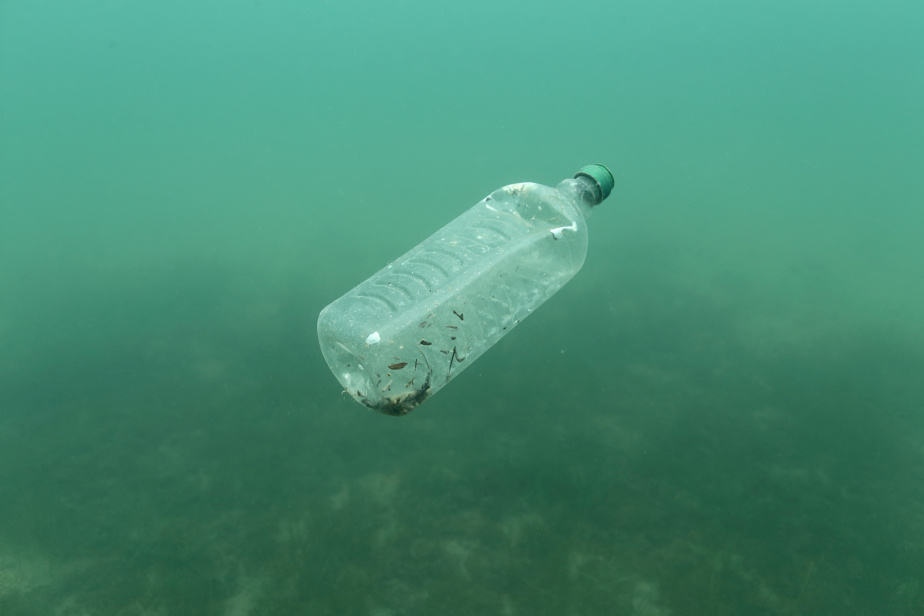(Montreal) The ingestion of plastic waste causes a new disease in seabirds which has just been described for the very first time in the scientific literature, plasticosis.
The disease has so far only been observed in pale-footed shearwaters that inhabit Lord Howe Island, about 600 kilometers off the coast of Australia, but there is no reason to believe that the same problem does not affect other birds or other mammals, the study’s lead author stressed.
“There is nothing special about the physiology of these birds or the composition of the plastic,” said Professor Alex Bond, the senior curator of birds at the Natural History Museum in London, in a conversation with La Canadian Press.
“Whales tend to eat soft plastic, like bags, and that may not have the same impact. But for species that ingest hard plastic, there’s nothing special about that species, so absolutely, it could happen in other animals. »
Some experts consider the pale-footed shearwaters of Lord Howe Island to be the most plastic-contaminated birds on the planet.

PHOTO FROM WIKIPEDIA
A New Zealand pale-footed shearwater
Rather than just studying birds whose deaths may have been caused by plastic, Professor Bond and his colleagues looked at what he called the ‘sub-lethal impacts’ of plastic ― that is, what passes indoors to birds that may appear healthy from the outside.
Chronic inflammation
Researchers have found that plastic debris ingested by birds causes chronic inflammation that damages the stomachs and digestive tracts of birds, which then interferes with their growth and survival.
These debris, Professor Bond said, “are not the microbeads [de plastique] everyone is worried about” and can be the size of a two dollar coin.
Plasticosis more specifically affects the proventriculus, the first chamber of the stomach of birds. Inflammation prevents plastic injuries to birds’ stomachs from healing properly. An abnormal amount of scar tissue then forms, which makes the stomach less flexible ― more “smooth” than a normal stomach, Professor Bond said ― and therefore less efficient at digesting food.
Researchers have also found that plastic debris damages the tubular glands of birds, which can make them more susceptible to infections and parasites, in addition to interfering with the absorption of vitamins.
“The more plastic they ingest, the more severe the plasticosis in their stomachs,” said Professor Bond, who has been studying birds on Lord Howe Island for about 15 years. But birds that ingest natural hard bits, like pumice stones, don’t have the same reaction. So it seems to be associated with the extent of plastic ingestion. »
Also the chicks
And the problem is not confined to adult birds. Up to 90% of chicks are contaminated by plastic regurgitated by their parents; in the most extreme cases, the little ones do not survive so much their stomach is filled with plastic that they are unable to digest.
British researchers have also established a direct correlation between the amount of plastic in the stomachs of baby birds and the length of their wings. They also found an association between the number of plastic pieces and the total weight of the bird.
Pale-footed shearwaters, Prof Bond said, lay their eggs towards the end of January. When the researchers arrived on site in late April, the chicks were 80 or 90 days old and had just begun to emerge from their underground nest boxes.
“So all the plastic that we find in the chicks was given to them by their parents for 90 days,” he explained. And we see that the chicks that contain the most plastic are lighter when we catch them, or when we find them dead on the beach. Their wings tend to be shorter. The growth of their beak is not finished. And there are other physiological effects, like their blood chemistry or the scarring in their stomach. »
Some baby birds carry 10% of their body weight in plastic, he added, by the time they have to fly to the Sea of Japan, learn to feed themselves for the first time, and find their way home. from Lord Howe Island after five years ― “so definitely it has an impact,” said Mr Bond, who compares the situation to a human being asked to run a marathon without training, while having in his stomach 10% of its body weight in indigestible matter.
This study also makes it possible in a certain way to take the pulse of the marine ecosystem, he underlined. Compared to other environmental contaminants like mercury, PFAS or even chemicals that have melted the ozone layer, very little is known about the impact of plastic on ecosystems, he said. And if we want to improve the planet, we have to understand what is happening.
“Measuring plastic at sea is difficult,” said Professor Bond. Seabirds can essentially be our eyes and ears. The healthier the seabirds, the more we can deduce that the oceans are doing a little better. They serve as a bit of a marker for the health of the entire marine ecosystem. »
And when you find a dead bird, the researcher concluded, it doesn’t really matter whether its death was caused by the plastic. “We’re pretty sure there’s nothing beneficial for a bird to have plastic in their stomach,” he said.
The observations of Professor Bond and his team have been published by the Journal of Hazardous Materials.
